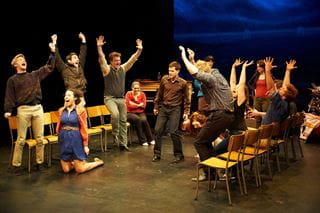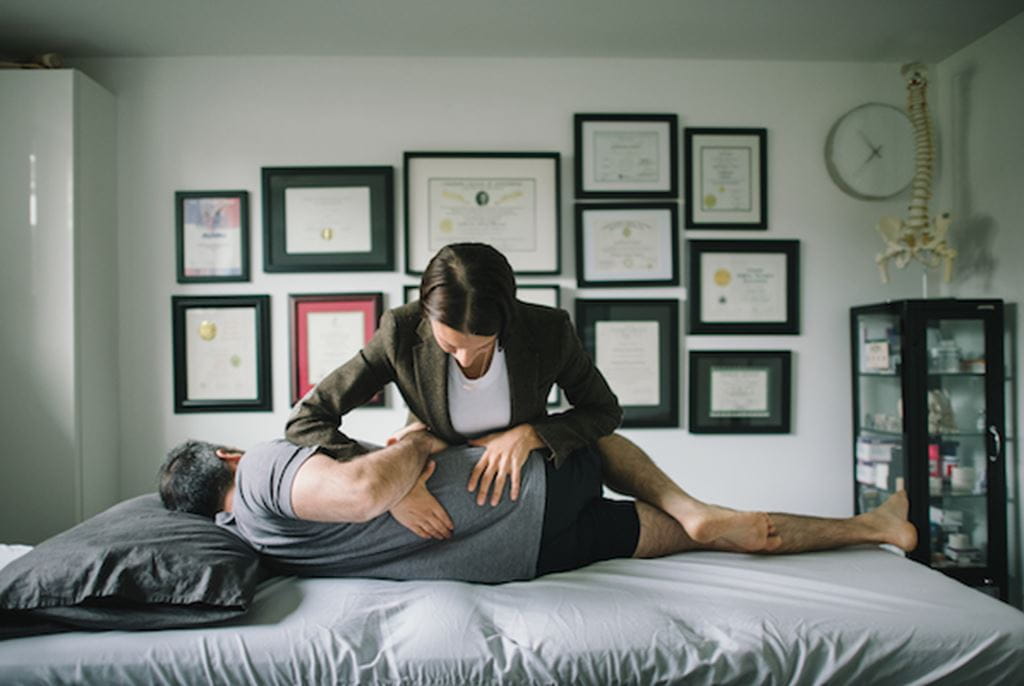
Preparing for liftoff: The ideology behind Sheridan’s revolutionary osteopathy degree
 by Jon Kuiperij – Apr 19, 2023
by Jon Kuiperij – Apr 19, 2023 René Pelletier’s application of osteopathic science has helped his patients reach new heights — literally.
For the past five years, Pelletier has provided sports medicine and osteopathic manual therapy services to David Saint-Jacques and other astronauts as a consultant with the Canadian Space Agency’s Operational Space Medicine division. .jpg?h=335&w=400&rev=e67cb36e3c61458786cb81a7690fe06f&hash=6D0D7563CF2BB8D158C42D25DD49CA3F) “Since the structures of the body adjust to internal and external pressures to which they’re exposed, living in microgravity for an extended period results in changes in the structure and function of almost every bodily system, even if countermeasures such as daily exercise are taken to minimize the physiological effects,” explains Pelletier (pictured, right, with Saint-Jacques), who was also the Canadian women’s soccer team’s athletic therapist for three years and worked with professional soccer and rollerblade hockey franchises in Montreal prior to becoming an osteopathic manual practitioner (OMP) in 1998.
“Since the structures of the body adjust to internal and external pressures to which they’re exposed, living in microgravity for an extended period results in changes in the structure and function of almost every bodily system, even if countermeasures such as daily exercise are taken to minimize the physiological effects,” explains Pelletier (pictured, right, with Saint-Jacques), who was also the Canadian women’s soccer team’s athletic therapist for three years and worked with professional soccer and rollerblade hockey franchises in Montreal prior to becoming an osteopathic manual practitioner (OMP) in 1998.
“To help astronauts readapt to macro-gravity conditions when they return to Earth, we built a rehabilitation program that minimizes acute symptoms such as the feeling of general tightness and stiffness throughout the body, restores normal movement patterns and mobility, and lessens the risk of post-flight injuries such as disk herniations, which astronauts are four times more likely to encounter in their first year back from space.”
"This (degree) is a milestone and an important step moving forward for the professionalization of osteopathy in Canada."
– René Pelletier
In becoming the first Canadian public postsecondary institution to offer an Osteopathy degree, Sheridan is also helping others prepare for the potential transition to a new environment — one in which the profession of osteopathy is regulated throughout the country. That makes Pelletier one of many interested observers as Sheridan prepares to welcome the Honours Bachelor of Science — Osteopathy’s first cohort as early as this fall. “This is a milestone and an important step moving forward for the professionalization of osteopathy in Canada. I hope and believe this will lead to a more critical view of the teachings and practice of osteopathy — which have relied heavily on tradition and philosophy within the curricula of private schools in Canada — which in turn should result in more evidence-informed practice,” he says.
Pelletier was just one of several prominent osteopathic manual practitioners Sheridan consulted with during the building of the program. To learn more about the ideology behind the Honours Bachelor of Science — Osteopathy degree, we spoke to four other OMPs who brought international, research, educational and multidisciplinary perspectives to its formation as members of the program’s ad-hoc Professional Advisory Council.
International
Whether it was watching his father play international rugby, suiting up for Luxembourg’s national squash team or competing in high-level soccer, Rob Mastroddi saw more than his fair share of injuries growing up. “I always felt badly for teammates and friends who got hurt, partly because it weakened my teams’ chances of winning but also because I knew how much I would hate to miss training and games,” he says. “We had several books in our home about sports medicine and injuries, and when someone got hurt, I’d sneakily seek out these books to find a section on the injury they had and how to rehab it.”
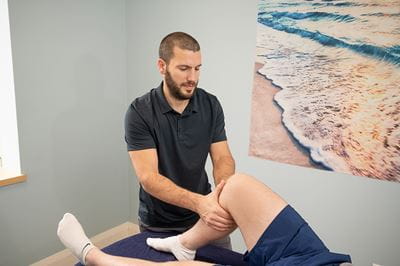 Mastroddi’s passion for helping others return to full health prompted him to earn a Sports and Exercise Science degree at Loughborough University and then a Master of Osteopathy with Distinction from University College of Osteopathy, the largest and oldest osteopathy school in the United Kingdom. As a practitioner, he has operated his own clinics in London, U.K., and Milton, Ont., and also performed volunteer work in developing nations such as Nepal and Ethiopia.
Mastroddi’s passion for helping others return to full health prompted him to earn a Sports and Exercise Science degree at Loughborough University and then a Master of Osteopathy with Distinction from University College of Osteopathy, the largest and oldest osteopathy school in the United Kingdom. As a practitioner, he has operated his own clinics in London, U.K., and Milton, Ont., and also performed volunteer work in developing nations such as Nepal and Ethiopia.
“Osteopathy is an unbelievably appropriate way to care for people in developing countries because it requires no physical equipment. You just need to have someone who is trained to practice it,” he says. “When I went to Ethiopia, I taught a group of local physiotherapists how to apply manual therapy so that they’d be able to use those exercise-rehab techniques on their patients after I left. It’s a way to make a longer-lasting impact.”
"I've seen what's important to create an environment in which regulation is possible, and educational programs are a huge part of that."
– Rob Mastroddi
Mastroddi is convinced Sheridan’s new degree will make a long-lasting impact as well, both domestically and internationally. “Having studied and taught osteopathy in a country where the profession is regulated, I’ve seen what’s important to create an environment in which regulation is possible, and educational programs are a huge part of that,” he says. “This degree can open doors to improve the standards of educational practice, ensuring that graduates have the foundation they need to become a great practitioner.”
Research and evidence-based practice
Pain is one of the main reasons people seek care from an osteopathic practitioner; yet, as the recent Canadian Pain Task Force report indicates, there’s a global lack of knowledge, education or ability to effectively treat people with pain across all professions.
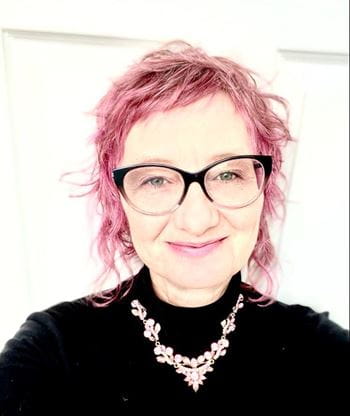 “We don’t know enough about the mechanisms,” says Monica Noy, a manual practitioner and independent researcher who holds a Bachelor of Science from the British College of Osteopathic Medicine, a Master of Science in Rehabilitation from McMaster University, and diplomas in osteopathic practice and massage therapy. “To me, it’s problematic that people can graduate from osteopathic or other health science programs without knowing the neuroscience of pain and how to keep that knowledge updated.”
“We don’t know enough about the mechanisms,” says Monica Noy, a manual practitioner and independent researcher who holds a Bachelor of Science from the British College of Osteopathic Medicine, a Master of Science in Rehabilitation from McMaster University, and diplomas in osteopathic practice and massage therapy. “To me, it’s problematic that people can graduate from osteopathic or other health science programs without knowing the neuroscience of pain and how to keep that knowledge updated.”
Noy believes Sheridan’s new degree will help fill that education gap through its Philosophy and Science of Pain course, one of two courses Noy proposed to be included in the curriculum. She also proposed a Critical Thinking in Osteopathy course, because “logical thinking can’t happen without critical thinking. To advance osteopathy towards regulation in our country, we need to be able to realize when research doesn’t support claims that have always been made in the profession and determine what to do about it,” she says. “Being critical thinkers will help us achieve this by encouraging learners to acknowledge, reflect on, and challenge their own thinking processes about osteopathy.”
"These courses won't necessarily change what we do with our hands, but they will definitely change how we think and reason in the clinical setting."
– Monica Noy
“Specific pain and critical thinking courses haven’t been part of Canadian osteopathic education until now, but it’s important for the future of osteopathy in Canadian healthcare that they are included. These courses won’t necessarily change what we do with our hands, but they will definitely change how we think and reason in the clinical setting.”
Education
When Joseph Rotella was enrolled in the Canadian College of Osteopathy (CCO)’s inaugural cohort in the mid-1990s, there weren’t many people he could turn to for guidance. “Our professors had come over from Europe and then returned there once their teaching was completed, so we were left practicing with no real direction or knowledge of what we could accomplish clinically,” Rotella recalls. “It was like being part of a ’60s rock band. We were experimenting, and we had no idea what the possibilities were.”
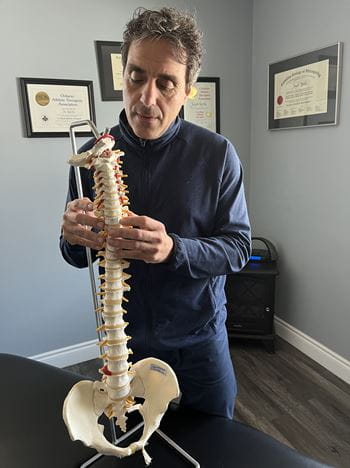 It wasn’t long before Rotella himself became a mentor to aspiring practitioners. Aided by the anatomical and physiological expertise he acquired while earning his Sports Injury Management diploma at Sheridan and Master of Science in Sports Medicine at Indiana State University, Rotella began running his own manual osteopathic practice out of his Hamilton home — where many CCO graduates came to observe him in action. Some of the concepts Rotella learned during his osteopathy studies spilled into lectures he delivered as a professor in Sheridan’s Athletic Therapy program (which was also the first of its kind in Canada), where he taught from 1995-2009. “If you look at the dossiers of manual osteopathic practitioners in Ontario, you’ll find that many of them studied Athletic Therapy at Sheridan,” he notes.
It wasn’t long before Rotella himself became a mentor to aspiring practitioners. Aided by the anatomical and physiological expertise he acquired while earning his Sports Injury Management diploma at Sheridan and Master of Science in Sports Medicine at Indiana State University, Rotella began running his own manual osteopathic practice out of his Hamilton home — where many CCO graduates came to observe him in action. Some of the concepts Rotella learned during his osteopathy studies spilled into lectures he delivered as a professor in Sheridan’s Athletic Therapy program (which was also the first of its kind in Canada), where he taught from 1995-2009. “If you look at the dossiers of manual osteopathic practitioners in Ontario, you’ll find that many of them studied Athletic Therapy at Sheridan,” he notes.
"A degree with a critical and practical component to it, overseen by practitioners who are knowledgeable... that's very different from how I was trained 30 years ago."
– Joseph Rotella
The time demands of running a successful clinic eventually forced Rotella to step away from teaching, but he embraced the opportunity to help build Sheridan’s ground-breaking degree as a member of the program’s ad-hoc Professional Advisory Council, then as a contributor to curriculum development. “It was very important to me that the program instill a high level of expertise, skill and knowledge,” says Rotella.
“The clinical component is essential. Students will have opportunities in class to apply skills and techniques they’ve learned, then apply them again in their practicum while they’re still in the program. A degree with a critical and practical component to it, overseen by practitioners who are knowledgeable... that’s very different from how I was trained 30 years ago.”
Multidisciplinary
Catherine Cabral was one of the first students Rotella inspired to pursue osteopathy — albeit reluctantly at first.
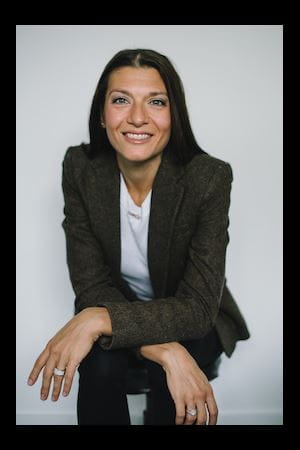 “I was in my final year of Sheridan’s Athletic Therapy program, looking forward to finally being done with school and starting my career. But there were instances in which Joe and Anne Hartley (another Sheridan Athletic Therapy professor who was part of the CCO’s first cohort) would share little tidbits in class that they knew would be helpful to us as athletic therapists but osteopathic in nature,” Cabral says. “I remember thinking ‘Oh, I wish you hadn’t shown me this because now I feel like I have to go and study this too.’”
“I was in my final year of Sheridan’s Athletic Therapy program, looking forward to finally being done with school and starting my career. But there were instances in which Joe and Anne Hartley (another Sheridan Athletic Therapy professor who was part of the CCO’s first cohort) would share little tidbits in class that they knew would be helpful to us as athletic therapists but osteopathic in nature,” Cabral says. “I remember thinking ‘Oh, I wish you hadn’t shown me this because now I feel like I have to go and study this too.’”
Cabral may have had mixed emotions about pursuing an osteopathy education back then, but she has no regrets now. “Being knowledgeable about both athletic therapy and osteopathy has been immensely beneficial to my practice,” says Cabral, who opened her own clinic (Motion Health & Wellness) in 2010 and has also worked with the Canadian and American national trampoline and tumbling teams. “It allows me to wear different hats on different days with the same patient, enabling me to apply different techniques that can bring amplified results. Yes, you can be a very successful practitioner in each of these professions independently, but having both skillsets maximizes your potential.”
"Being knowledgeable about both athletic therapy and osteopathy... allows me to wear different hats on different days with the same patient, enabling me to apply different techniques that can bring amplified results."
– Catherine Cabral
Cabral now brings that multidisciplinary mentality to Sheridan’s Bachelor of Science — Osteopathy degree as the program’s first coordinator. “Before this opportunity with Sheridan came up, I was planning to create exercise-based learning courses for osteopathic practitioners. Now, I’m able to make sure people who are being educated in osteopathy also have those skills because we can build them right into this program,” she says. “We’ve also talked to other people with dual designations — osteopathic practitioners who are also physiotherapists or registered massage therapists — to enhance our understanding of how their multiple skillsets complement each other.”
To learn more about Sheridan’s Honours Bachelor of Science — Osteopathy, read our recent media release or visit the program page.
Media Contact
For media inquiries, contact Sheridan’s Communications and Public Relations team.

